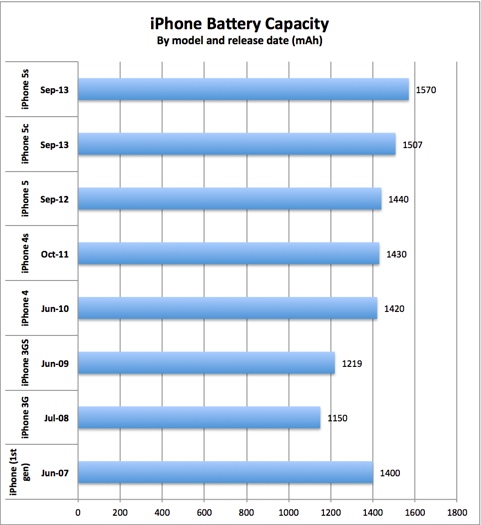Apple has only increased the iPhone's battery capacity by 12 percent in six years

Once upon a time – a little while after the dinosaurs were roaming the earth – the thing that was holding back PCs was Moore's law. You couldn't get enough transistors into a processor to do everything that was expected of the hardware, and it was taking 12 to 18 months for that transistor capacity to double, with resulted a few more megahertz.
Now with processors ticking along at gigahertz speeds, and the silicon having more cores that you can shake a stick of RAM at, processor power isn't much of an issue. Sure, it's nice to have more power, but unless you're doing something like 3D modeling, video rendering, crunching big numbers, or high-end gaming, chances are that most of that power is going to waste.
The shift in focus from the PC to post-PC devices has only hastened the demise of the importance of the processor. With mobile devices, it's not processor power that matters, but power to run the processor and the rest of the device. Being disconnected from a constant power supply puts a lot of pressure on the battery, and as we've moved from nickel-cadmium technology to nickel-metal hydride to the more modern lithium-ion, energy density has increased dramatically. But on the flipside to this is the pressure to make devices as small and as thin as possible, limiting the space available for the battery.
It's a fine balancing act.
While digging through the Apple's FCC filings for the new iPhones, tech site AnandTech came across the battery specs for the iPhone 5s and iPhone 5c. While reviewing these it struck me how little the iPhone's battery capacity has grown in the six years it has been out, and yet how much more the device does.
In real terms, the increase in only 12 percent. The original iPhone came kitted out with a 1400 mAh battery, while the iPhone 5s comes with a 1570 mAh. What's interesting is that battery capacities dropped when the iPhone 3G hit the scene, falling to 1150 mAh, and only increasing to 1219 with the release of the iPhone 3GS.

iPhone battery capacity didn't exceed that of the first-generation handset until the iPhone 4 was released, which came equipped with a 1420 mAh battery pack.
During that time Apple has kept the battery usage times for the handset under different conditions pretty much the same, while at the same time adding features such as a retina display and more powerful processors. In fact, that 12 percent bigger battery in the iPhone 5s is driving a 64-bit processor that's 40 times faster than that found in the original iPhone, and a GPU that's a staggering 56 times faster.
That's quite a achievement, and a testament to how much more efficient silicon has become now that we're making more use of mobile and relying more on battery packs to power devices.
Over the same time, the volume of the iPhone has dropped from approximately 81 cm3 to 55 cm3. The weight has dropped from 135 grams to a petite 112 grams.
Since the iPad has been on the market, it's battery capacity has doubled, while the iPad mini has a battery that's more than twice the capacity of the iPhone 5s.